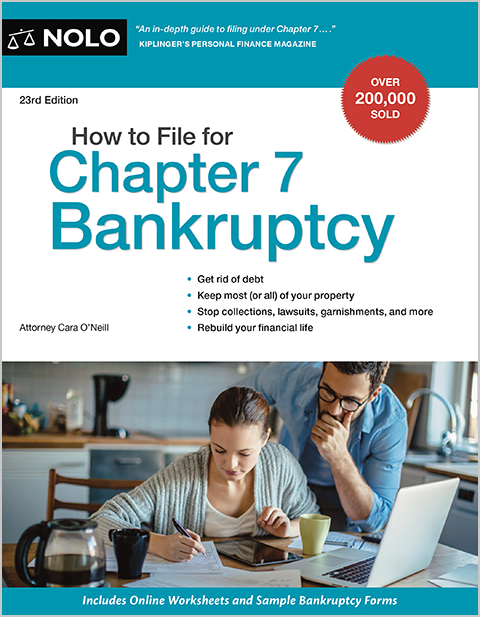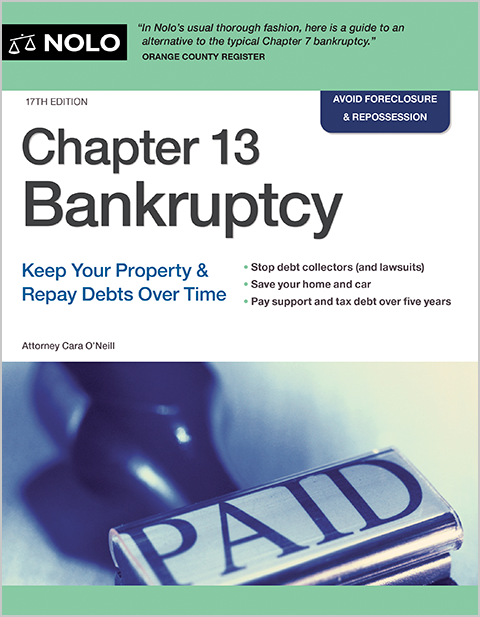In a Chapter 20 bankruptcy, you file Chapter 7 immediately before Chapter 13. Find out what a Chapter 20 bankruptcy is and when two bankruptcy filings can be better than one.
Some debtors have financial problems that are not completely solved by either Chapter 7 or Chapter 13 bankruptcy. In certain situations, filing a Chapter 13 bankruptcy immediately after completing a Chapter 7 bankruptcy, informally referred to as "Chapter 20," provides more relief than filing a Chapter 7 or Chapter 13 alone. This article discusses how Chapter 20 bankruptcy works and some of the pros and cons of filing Chapter 7 and Chapter 13 bankruptcy.
What Is a Chapter 20 Bankruptcy and How Does It Work?
Chapter 20 refers to a strategy where Chapter 13 is filed right after Chapter 7 is completed. Qualifying debts are erased or "discharged" in the initial Chapter 7 case. Debts not discharged in Chapter 7 are paid over time in Chapter 13.
One of the challenges of this approach is that a filer's income is rarely low enough to qualify for Chapter 7 bankruptcy yet high enough to pay the required Chapter 13 plan payment. But it works in some instances.
Also, when you file a Chapter 13 after Chapter 7 without waiting four years, you aren't entitled to receive a discharge in Chapter 13. But this isn't a problem because you won't need one, having already discharged qualifying debts in Chapter 7. Find out how often you can receive a bankruptcy discharge.
When Is a Chapter 20 Bankruptcy Helpful?
You need more money and time to apply to a nondischargeable debt. The benefit of this approach is that the Chapter 13 plan will give you extra time to pay down nondischargeable debts that were not eligible for discharge under Chapter 7, such as tax debts and support obligations without fear of creditor collection actions. Also, by filing a Chapter 7 first, you can reduce your unsecured debt so that more of your income is available to pay the nondischargeable debt. You'll be more likely to qualify.
You want to utilize lien stripping. Some courts allow you to strip off fully unsecured junior mortgages (for instance, a second, third, or fourth mortgage) through Chapter 13 bankruptcy. To learn more, see What is Lien Stripping in Chapter 13 Bankruptcy?
You need the extra time but have too much debt. Chapter 13 debt limits used to be much lower than they are currently, which sometimes would create an issue wherein someone would be forced to file for Chapter 11 rather than the more cost-effective Chapter 13. Here's how this would work. By filing Chapter 7, you reduce your overall debt. Then, with your debt load reduced, you might be within the debt limits of Chapter 13. This would allow extra time to pay a nondischargeable debt, like taxes or support arrearages.
Caution. Remember that this approach isn't practical if you want to save a home or car. While it could work, most bankruptcy filers aren't willing to take the real risk of losing the home or vehicle in Chapter 7 before filing the Chapter 13 case. Also, not all courts allow Chapter 20 filings, so speak with a knowledgeable bankruptcy lawyer.
Pros and Cons of Only Filing for Chapter 7 Bankruptcy
Chapter 7 bankruptcy has its benefits and detriments. The benefits are obvious if you qualify to file a Chapter 7 and don't have non-exempt assets that you want to keep. Under Chapter 7:
- you receive your discharge quickly,
- you discharge unsecured debts without tying up your income for the next three to five years, and
- there are no debt limits to qualify.
However, there are some things Chapter 7 bankruptcy cannot do. Under Chapter 7:
- you can't force creditors to allow you to cure a mortgage or car loan arrearage over time
- you can't force creditors to give you extra time to pay non-dischargeable debts, and
- you can't strip unsecured second mortgages.
Learn more about Chapter 7 Bankruptcy.
Pros and Cons of Only Filing for Chapter 13 Bankruptcy
Under Chapter 13, you benefit because you can:
- force creditors to allow you to cure a mortgage or car loan arrearage over time
- force creditors to give you extra time to pay non-dischargeable debts, and
- strip unsecured second mortgages.
Some of the detriments of Chapter 13 include the following:
- you do not receive your discharge quickly
- you commit to a plan that ties up your income for three to five years, and
- you are not eligible if you don't have enough income to make required plan payments or if you exceed the Chapter 13 debt limits.

